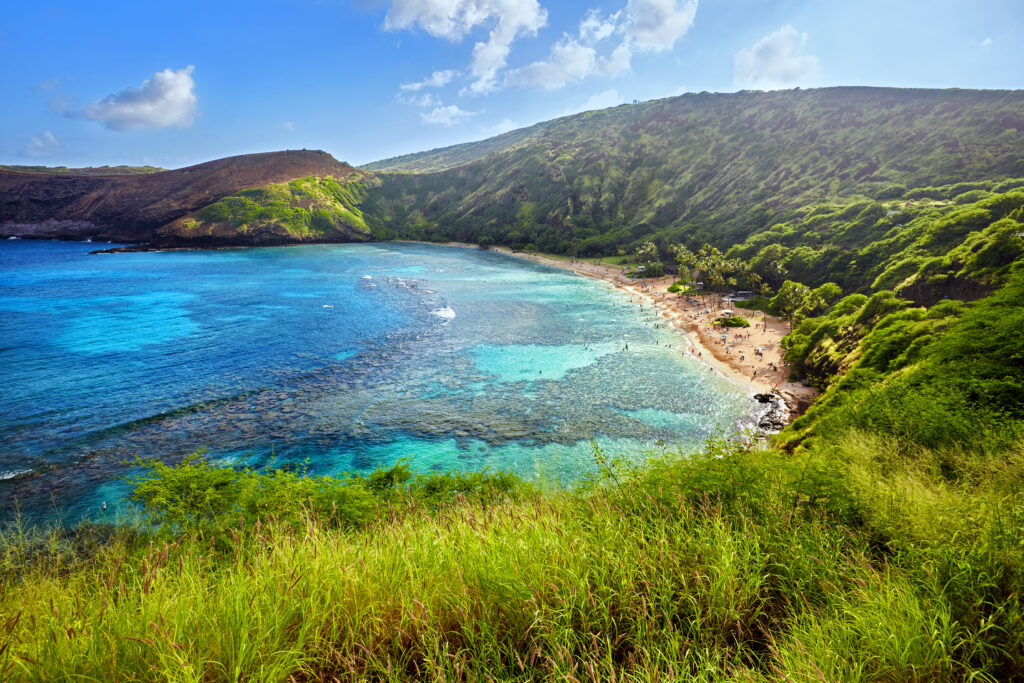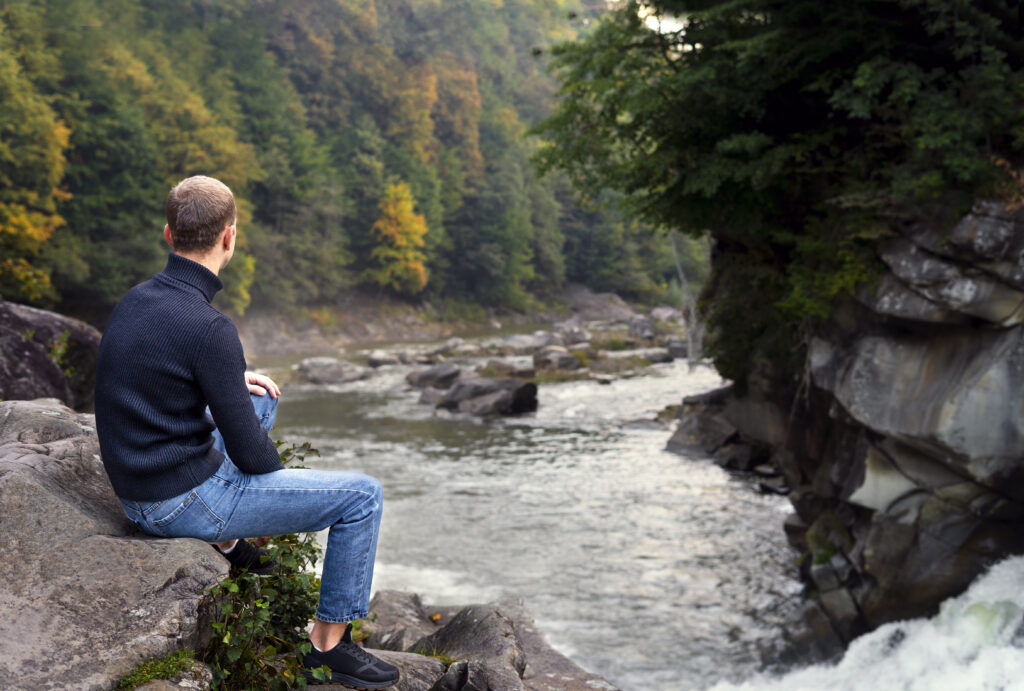Are you in need of a peaceful getaway to recharge and rejuvenate? Look no further than the United States, home to some of the world’s most serene and tranquil vacation spots. From pristine beaches to breathtaking mountains, the United States offers a diverse range of relaxing destinations. In this blog, we’ll explore five of the most relaxing vacation spots in the United States that will help you unwind and escape the stresses of everyday life.
Maui, Hawaii:
 Known for its stunning beaches, lush landscapes, and laid-back atmosphere, Maui is a paradise for relaxation seekers. Whether you’re lounging on the golden sands of Wailea Beach, exploring the scenic Road to Hana, or watching the sunset from atop Haleakalā Crater, you’ll find endless opportunities to unwind and connect with nature on this beautiful island.
Known for its stunning beaches, lush landscapes, and laid-back atmosphere, Maui is a paradise for relaxation seekers. Whether you’re lounging on the golden sands of Wailea Beach, exploring the scenic Road to Hana, or watching the sunset from atop Haleakalā Crater, you’ll find endless opportunities to unwind and connect with nature on this beautiful island.
Geography
- Location: Maui is located in the central Pacific Ocean, part of the State of Hawaii, USA.
- Landscapes: The island features a variety of landscapes, including pristine beaches, lush rainforests, volcanic craters, and rugged coastlines. It is home to Haleakalā National Park, which houses the massive Haleakalā volcano.
- Climate: Maui enjoys a tropical climate, with warm temperatures year-round. The island’s geography creates several microclimates, ranging from arid to wet environments.
When to Visit
- Best Time to Visit: The best times to visit Maui are during the spring (April to May) and fall (September to November) months. These seasons offer pleasant weather, fewer crowds, and lower prices.
- Weather: Maui enjoys a tropical climate, but different areas of the island experience distinct weather patterns. The west and south coasts are generally drier, while the east coast and inland areas receive more rainfall.
Getting There
- Air Travel: Kahului Airport (OGG) is the main airport on the island, serving as the entry point for most visitors. There are direct flights from the continental US and other parts of Hawaii.
- Inter-Island Travel: If you’re exploring other Hawaiian Islands, consider taking a short flight to Maui for a multi-island experience.
Where to Stay
- Regions: Popular areas to stay include Lahaina, Kihei, Wailea, and Kapalua, each offering a range of accommodations from luxury resorts to budget-friendly hotels.
- Accommodation Types: Depending on your preference and budget, you can choose from resorts, hotels, vacation rentals, and condos.
Things to Do
- Haleakalā National Park: Witness the sunrise or sunset from the summit of Haleakalā volcano. Advanced reservations are required for sunrise visits.
- Road to Hana: Embark on a scenic drive to Hana to experience lush landscapes, waterfalls, and black sand beaches. Consider staying overnight in Hana to fully enjoy the experience.
- Beaches: Spend time at Maui’s famous beaches, such as Kaanapali, Wailea, and Makena Beach Park.
- Snorkeling and Diving: Explore Maui’s underwater world at spots like Molokini Crater, Turtle Town, and Honolua Bay.
- Cultural Experiences: Attend a luau, visit the Lahaina Historic District, and learn about Hawaiian culture and history.
Tips for Travelers
- Rent a Car: To fully explore Maui, consider renting a car. This gives you the flexibility to visit various attractions at your own pace.
- Respect the Environment: Follow Leave No Trace principles, especially in protected areas and near wildlife.
- Safety: Pay attention to safety signs and guidelines, especially when hiking or swimming. Conditions can change rapidly.
Culinary Experience
- Local Cuisine: Don’t miss the chance to try Hawaiian specialties like poke, loco moco, and shave ice. Maui also offers fine dining experiences with a focus on local, fresh ingredients.
Shopping and Souvenirs
- Local Markets: Visit local markets and shops for unique Hawaiian crafts, art, and jewelry. Lahaina’s Front Street is a popular spot for shopping and dining.
Adventure Activities
- Outdoor Adventures: Maui offers a range of outdoor activities, including hiking in Iao Valley State Park, zip-lining, windsurfing, and paragliding.
Relaxation
- Spa and Wellness: Many resorts offer spa services where you can enjoy massages and treatments inspired by Hawaiian traditions.
Sedona, Arizona:
Nestled amidst Arizona’s high desert’s stunning red rock formations, Sedona is renowned for its breathtaking scenery and spiritual energy. Spend your days hiking through scenic canyons, practicing yoga in serene settings, or indulging in a rejuvenating spa treatment surrounded by nature’s beauty. With its tranquil vibe and awe-inspiring landscapes, Sedona is the perfect destination for relaxation and renewal.
Location
- State: Arizona
- Region: Northern Verde Valley
- Sedona is situated within Coconino and Yavapai counties in the northern part of the state, approximately 100 miles north of Phoenix and 30 miles south of Flagstaff.
Landscape and Topography
- Red Rock Formations: Sedona’s most iconic feature is its array of red sandstone formations, which glow in brilliant orange and red when illuminated by the rising or setting sun. These formations, such as Cathedral Rock, Bell Rock, and Courthouse Butte, have been shaped over millions of years by natural forces such as erosion and weathering.
- Canyons and Valleys: The area is characterized by its deep canyons, lush valleys, and the winding Oak Creek Canyon, offering spectacular scenery and a contrast to the red rocks.
- Elevation: Sedona sits at an elevation of about 4,350 feet (1,326 meters) above sea level, contributing to its mild climate and making it a cooler alternative to Arizona’s lower desert areas.
Flora and Fauna
- Vegetation: The region’s higher elevation and the presence of Oak Creek support a diverse range of vegetation, from juniper and piñon pine to broadleaf trees and various species of cacti, adding to the area’s natural beauty.
- Wildlife: The varied habitats in and around Sedona are home to a wide array of wildlife, including deer, coyotes, javelina, and numerous bird species, making it a great location for nature enthusiasts and bird watchers.
Geological Features
- Vortex Sites: Sedona is famous for its vortex sites, which are believed to be swirling centers of energy that promote healing, meditation, and spiritual exploration. These sites, including those at Airport Mesa, Cathedral Rock, Bell Rock, and Boynton Canyon, attract visitors from around the world.
- Geological History: The region’s striking landscapes were formed by layers of sedimentary rock deposited over millions of years, then lifted and sculpted by the earth’s geological processes. The red coloration of the rocks is due to the presence of iron oxide or rust, which dates back to ancient times when these rocks were formed under environmental conditions different from today.
Water Features
- Oak Creek: Running through the heart of Sedona, Oak Creek is a perennial stream that plays a crucial role in the area’s ecosystem, supporting a diverse range of plant and animal life. The creek also offers recreational opportunities, such as swimming and fishing.
Climate
- Sedona experiences a mild climate that is characterized by hot summers and cool winters, with a notable difference in temperature between day and night. Its elevation and geographic location contribute to its relatively mild weather compared to other parts of Arizona, making it a year-round destination for visitors.
When to Visit
- Best Time to Visit: The best times to visit Sedona are during the spring (March to May) and fall (September to November) when the weather is mild, and the natural scenery is at its most vibrant. These seasons also offer comfortable temperatures for hiking and outdoor activities.
- Weather: Sedona experiences a mild climate year-round, with hot summers and cool winters. Snow is rare, but cooler temperatures in winter make it a great time for cozy retreats.
Getting There
- Air Travel: The closest major airport to Sedona is Phoenix Sky Harbor International Airport (PHX), about two hours away by car. Flagstaff Pulliam Airport (FLG) is closer but offers fewer flights.
- Driving: Sedona is easily accessible by car and is a popular road trip destination. It’s located off Interstate 17, making it a straightforward drive from Phoenix, Flagstaff, and other Arizona cities.
Where to Stay
- Accommodations: Sedona offers a wide range of accommodations, from luxury resorts and boutique hotels to cozy bed and breakfasts and vacation rentals. Many properties offer stunning views of the red rocks.
- Popular Areas: Consider staying in Uptown Sedona for easy access to shops and restaurants, West Sedona for a more residential feel, or Oak Creek Canyon for a secluded, natural setting.
Things to Do
- Outdoor Activities: Hiking is a must-do activity in Sedona, with trails like Cathedral Rock, Bell Rock, and Devil’s Bridge offering breathtaking views. Mountain biking, jeep tours, and hot air balloon rides are also popular.
- Spiritual and Wellness: Sedona is known for its vortex sites, believed to be centers of energy that are conducive to healing, meditation, and self-exploration. Many visitors come for yoga retreats, spa treatments, and spiritual guidance.
- Arts and Culture: Explore Sedona’s vibrant arts scene with a visit to its numerous galleries, studios, and museums. The Tlaquepaque Arts & Shopping Village is a must-visit for art enthusiasts.
- Day Trips: Consider day trips to nearby attractions such as the Grand Canyon, about two hours away, or the historic mining town of Jerome.
Culinary Scene
- Local Cuisine: Sedona’s dining scene offers everything from casual cafes to fine dining restaurants, many with outdoor seating to enjoy the scenic views. Southwestern and Native American cuisines are local specialties.
Tips for Travelers
- Plan Ahead: Some trails and attractions may require permits or reservations, especially during peak travel seasons.
- Stay Hydrated: The dry climate and higher elevation can lead to dehydration, so carry water during outdoor activities.
- Respect the Environment: Follow Leave No Trace principles to help preserve Sedona’s natural beauty for future generations.
Shopping and Souvenirs
- Local Crafts: Sedona’s shops and markets offer a variety of local crafts, jewelry, and art pieces, perfect for taking a piece of Sedona home with you.
Napa Valley, California:
Escape to California’s wine country and immerse yourself in the laid-back luxury of Napa Valley. With its rolling vineyards, world-class wineries, and gourmet dining options, Napa offers a truly indulgent experience for relaxation enthusiasts. Sip on fine wines as you soak in panoramic countryside views, unwind with a leisurely bike ride through picturesque valleys, or pamper yourself with a relaxing spa day at one of the region’s renowned resorts.
Geography of Napa Valley
- Location: Napa Valley is situated about 50 miles north of San Francisco, making it accessible for day trips or longer stays from the Bay Area. It stretches approximately 30 miles long and 5 miles wide at its widest point.
- Topography: The valley is flanked by the Mayacamas Mountains to the west and the Vaca Mountains to the east, creating a natural basin that is conducive to vineyard cultivation. Its rolling hills and varied terrain contribute to the area’s scenic beauty and the complexity of its wines.
- Climate: Napa Valley benefits from a Mediterranean climate, characterized by warm, dry summers and cool, wet winters. This climate, combined with the fog that rolls in from San Pablo Bay, creates ideal conditions for growing a variety of wine grapes, particularly Cabernet Sauvignon, Chardonnay, Merlot, and Pinot Noir.
- Soil: The valley boasts a rich diversity of soils, considered among the most varied in the world within a single wine region. This diversity allows for the cultivation of a wide range of grape varieties and contributes to the distinct character and complexity of Napa Valley wines.
Travel to Napa Valley
- Best Time to Visit: The best times to visit Napa Valley are during the spring (March to May) when the mustard flowers are in bloom and the fall (September to November) during the grape harvest season. These periods offer beautiful scenery, pleasant weather, and a series of wine-related events.
- Getting There: The nearest major airport is San Francisco International Airport (SFO). From there, visitors can rent a car and drive to Napa Valley. Alternatively, Oakland International Airport (OAK) and Sacramento International Airport (SMF) are also within reach.
- Where to Stay: Napa Valley offers a range of accommodations, from luxury resorts and boutique hotels to cozy bed and breakfasts. Many accommodations are nestled among vineyards, offering stunning views and easy access to wine tastings.
- Things to Do: Beyond wine tasting, Napa Valley offers hot air balloon rides, gourmet dining experiences, spa treatments featuring local products like grape seed extracts, and hiking or biking through its picturesque landscapes.
- Wine Tours: Joining a guided wine tour can be a great way to explore the region’s wineries, from iconic estates to family-run boutique wineries. Tours often provide insights into the winemaking process and include tastings of exclusive vintages.
- Dining: Napa Valley is not just about wine; it’s also a destination for foodies, boasting several Michelin-starred restaurants and a variety of dining options that emphasize farm-to-table cuisine.
Tips for Travelers
- Advance Planning: Many wineries require reservations for tastings, especially post-pandemic, so it’s advisable to book in advance.
- Transportation: Consider hiring a driver or joining a tour if you plan to visit multiple wineries in a day, as this allows everyone in your party to enjoy the tastings without worrying about driving.
Napa Valley’s unique geography and favorable climate have made it a world-class wine-producing region and a sought-after destination for travelers seeking to enjoy fine wines, gourmet food, and the natural beauty of California’s wine country.
Outer Banks, North Carolina:
Head to the Outer Banks of North Carolina for a beach getaway that feels like a true retreat. With its unspoiled coastline, charming seaside towns, and tranquil atmosphere, the Outer Banks offers the perfect setting for relaxation. Spend your days lounging on pristine beaches, exploring historic lighthouses, or indulging in fresh seafood at waterfront restaurants. Whether seeking solitude or quality time with loved ones, the Outer Banks has something for everyone.
Geography of the Outer Banks
- Barrier Islands: The Outer Banks are a series of narrow, sandy barrier islands. Their formation is dynamic, constantly reshaped by the forces of wind, water, and storms.
- Sounds: Between the islands and the mainland are several large sounds, including Albemarle Sound and Pamlico Sound, which are shallow bodies of brackish water teeming with wildlife.
- Cape Hatteras: Notable for its iconic lighthouse, Cape Hatteras is a point of high geographic and historical significance, marking the spot where the Gulf Stream converges with the Labrador Current, often creating turbulent waters and a rich marine environment.
Travel to the Outer Banks
- Best Time to Visit: The best time to visit the Outer Banks is during the late spring (May to early June) and early fall (September to October). These periods offer mild weather, fewer crowds, and more affordable accommodation rates compared to the peak summer months.
- Getting There: The closest major airports are Norfolk International Airport in Virginia (about 82 miles from Kitty Hawk) and Raleigh-Durham International Airport in North Carolina. From these points, visitors can rent a car and drive to the Outer Banks. The region is accessible via several routes, including U.S. Highway 158 and State Route 12.
- Where to Stay: Accommodations in the Outer Banks range from luxury resorts and vacation rentals to cozy bed and breakfasts and campgrounds. Many visitors choose to rent beach houses, which are available along the entire stretch of the islands.
- Things to Do: The Outer Banks is a haven for outdoor and recreational activities, including:
- Beach Activities: With miles of sandy beaches, visitors can enjoy sunbathing, swimming, and beachcombing.
- Water Sports: The area is popular for surfing, kiteboarding, windsurfing, and fishing.
- Wildlife Viewing: The Pea Island National Wildlife Refuge and other protected areas offer opportunities to observe birds and other wildlife.
- Historical Sites: Explore the Wright Brothers National Memorial, where the first powered flight took place, or visit the historic Roanoke Island, the site of the first English colony in the New World.
- Lighthouses: Tour the famous Cape Hatteras Lighthouse and other historic lighthouses along the coast.
Tips for Travelers
- Advance Planning: Especially during the peak summer season, it’s wise to book accommodations and ferry reservations (if traveling to islands like Ocracoke) well in advance.
- Prepare for Weather: The Outer Banks can experience sudden weather changes, including storms and high winds, so check forecasts and prepare accordingly.
- Explore Beyond the Beach: While the beaches are a major draw, the Outer Banks also offer rich cultural and historical experiences, nature trails, and opportunities for bird watching and stargazing.
Traveling to the Outer Banks provides a unique blend of natural beauty, adventure, and history, making it a cherished destination for both relaxation and exploration along the East Coast of the United States.
Lake Tahoe, California/Nevada:
Surrounded by the majestic Sierra Nevada mountains, Lake Tahoe is a haven for outdoor enthusiasts and relaxation seekers alike. In the summer, you can kayak on the crystal-clear waters, hike through lush forests, or relax on the shores of the lake. In the winter, you can hit the slopes at world-class ski resorts or cozy up by the fireplace in a charming cabin. With its breathtaking scenery and year-round recreational opportunities, Lake Tahoe is the perfect destination for a peaceful getaway.
Geography of Lake Tahoe
- Location: Lake Tahoe is situated in the Sierra Nevada mountain range, with about two-thirds of the shoreline in California and one-third in Nevada.
- Size and Depth: The lake is approximately 22 miles long and 12 miles wide, with a surface area of 191 square miles. Its maximum depth is 1,645 feet, making it the second-deepest lake in the U.S. after Crater Lake in Oregon.
- Water Clarity: Tahoe is renowned for its clear waters, with visibility up to 75 feet deep in some areas. The clarity is due to the relatively low amount of algae-producing nutrients in the water, although concerns about long-term clarity due to development and climate change persist.
- Surrounding Landscape: The lake is encircled by high mountains, leading to stunning vistas and making it a popular location for hiking, skiing, and photography. The Tahoe Basin is characterized by a variety of ecosystems, from lakefront beaches to alpine forests and mountain meadows.
Travel to Lake Tahoe
- Best Time to Visit:
- Winter (December to February) for skiing and snowboarding. The region is home to numerous ski resorts renowned for their deep snowpack and extensive terrain.
- Summer (June to August) for hiking, mountain biking, swimming, and boating. The lake’s beaches and clear waters make it a perfect summer getaway.
- Getting There: The closest major airports are Reno-Tahoe International Airport in Nevada, about an hour’s drive from the north shore, and Sacramento International Airport in California, approximately two hours from the south shore. A car is recommended for exploring the area fully.
- Where to Stay: Accommodations range from lakeside resorts and condos to cabins and campgrounds. The north shore is known for its quieter, more relaxed atmosphere, while the south shore features a lively scene with casinos (on the Nevada side), restaurants, and entertainment.
Things to Do
- Outdoor Activities: Depending on the season, visitors can enjoy skiing, snowboarding, snowshoeing, hiking, mountain biking, kayaking, paddleboarding, and boating.
- Scenic Drives: Circumnavigating the lake by car offers breathtaking views and access to various beaches, parks, and hiking trails.
- State Parks and Beaches: Emerald Bay State Park, D.L. Bliss State Park, and Sand Harbor are just a few of the spots known for their beauty and recreational opportunities.
- Casinos and Nightlife: The Nevada side of Lake Tahoe offers casinos, live shows, and nightlife, particularly in the towns of Stateline and Crystal Bay.
- Cultural and Historical Sites: Explore the region’s history through sites like the Tallac Historic Site and the Thunderbird Lodge.
Tips for Travelers
- Plan Ahead: Especially during peak seasons, accommodations and activities like boat rentals and guided tours can book up quickly.
- Respect the Environment: Lake Tahoe’s ecosystem is delicate. Visitors are encouraged to practice Leave No Trace principles, such as packing out trash and staying on designated trails.
- Be Prepared for Altitude: The lake’s surface elevation is over 6,000 feet, and some surrounding peaks are much higher. Visitors may need time to acclimatize to the altitude.
Traveling to Lake Tahoe offers a unique opportunity to experience one of the most beautiful natural landscapes in the United States, with a wealth of activities to suit every interest and season. Whether seeking adventure, relaxation, or simply the chance to take in the breathtaking scenery, Lake Tahoe is a destination that truly has something for everyone.
Conclusion:
From the sandy shores of North Carolina’s Outer Banks to the majestic mountains of Lake Tahoe, the United States offers a wealth of relaxing vacation spots waiting to be explored. This list only scratches the surface of all of the relaxing destination options the United States has to offer you.
Whether you’re seeking sun-drenched beaches, tranquil landscapes, or luxurious amenities, these five destinations have everything you need to unwind and recharge. So why wait? Start planning your next relaxing getaway today and experience the serenity of these incredible destinations.









